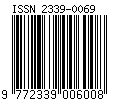Lauryl Hydroxysultaine as a Low Dose Foam Enhancing Booster
DOI:
https://doi.org/10.19184/bst.v12i4.53374Keywords:
Cocamidopropyl betaine, foam booster, lauryl hydroxysultaine, shampoo, surfactantAbstract
The growth of Indonesia's cosmetics industry reached 21.9%, with 913 companies in 2022 and 1,010 companies by mid-2023. Among the total products from local cosmetic companies, the largest market segment is personal care. Shampoo and bodywash are the two main categories of personal care cleansing products. Foam is an important indicator of product quality; however, technically, foam does not always correlate with the cleaning strength of a product. Nevertheless, consumers expect shampoos and body washes to lather easily and produce abundant foam. The foaming ability of a product is influenced by several factors, one of which is the addition of foam boosters. Cocamidopropyl betaine (CAPB) is the most used foam booster and is produced on a large scale. Another foam booster is lauryl hydroxysultaine (LHS) which has better foam-producing ability than CAPB. This study aims to determine the right formulation of LHS addition in shampoo and bodywash thus it meets the specified requirements. Shampoo and bodywash were prepared with several formulations, the samples were then tested for their viscosity, foam quality, and irritation potential. The results showed that LHS performed better than CAPB for the three parameters above. It was obtained that a dose of 2% LHS gave a better effect than 3% CAPB. It is, therefore, quite profitable from an economic and environmental perspective.
Downloads
Downloads
Published
Issue
Section
License
Copyright (c) 2024 Avicenna Mustika Putri, Sholeh Ma'mun, Ariany Zulkania

This work is licensed under a Creative Commons Attribution-NonCommercial 4.0 International License.



